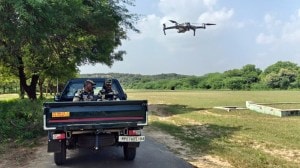Wanted: A crop insurance scheme that works
Ever wondered why, despite freak rains, prolonged dry spells, wildly fluctuating temperatures and dropping water levels, Punjab has never re...

Ever wondered why, despite freak rains, prolonged dry spells, wildly fluctuating temperatures and dropping water levels, Punjab has never really shown major crop losses?
No, it’s not all about hard work and good luck. Punjab is paying a very high price to maintain its status as the highest contributor to the nation’s food basket. But as farmer suicides (2, 016 in the past five years, according to the state government, between 20,000 and 40,000 according to NGOs) and foreign migrations become more and more common in the community, the one factor that could alleviate their lot still remains elusive: crop insurance.
Though in circulation for at least four decades, the idea is yet to take off in a manner that benefits the 10 lakh-odd farmers who work Punjab’s fields. The parameters of the GoI’s National Agriculture Insurance Scheme and its subsequently modified edition do not suit the farmers here; the state, in fact, has been long demanding flexible parameters for various states.
As of now, there’s only one private crop insurer in Punjab. Some 3,200 farmers have signed up for ICICI Lombard’s weather insurance schemes, but a majority of farmers—deterred by the high premium charged by private players—prefer to hold out for a viable, cheap government policy.
‘‘Actually, the assured irrigation that Punjab achieved during the ’70s is backfiring on us,’’ says Darshan Singh Dhanetha, a farmer from Samana.
‘‘Despite the undependable weather, we have never let our crops die, going to the extent of burning diesel, boring deep submersible pumps and running up huge bills to irrigate our fields last year and in 2002. Our input costs escalated and the returns could never match up. But since there was no major crop damage, no drought was declared in the state and so we received no compensation.’’
Under government policy, compensation becomes payable only if there is at least 25 per cent damage to standing crops. But state agriculture department figures indicate damage has never crossed 4-5 per cent unlike, say, Bihar or Uttar Pradesh, where drought invariably translates into major crop failure.
With state farmers qualifying for compensation on only a few occasions—including the 1989 floods and a major hailstorm in 1970—outsiders have always questioned the suicide figures for the state.
‘‘Going by the growing figures of grain production, they thought farmers had no reason to kill themselves. They do not see the mounting input costs and the consequent debt burden,’’ points out Nabha-based farmer Jagpal Singh Oodha.
While state farmers have long demanded input costs be considered as a parameter in the government insurance scheme, the increasingly unpredictable weather—thanks in part to global warming and in part to environmental imbalances in the state—is giving the issue a new currency.
‘‘Mean temperature fluctuations have never been so sharp in the state,’’ say sources in the state agriculture department. ‘‘There have been variations of 14 degrees C in the mean maximum temperature and 11.9 degree C in the mean minimum temperatures over the past six months.”
Over the years, the fluctuating weather patterns have affected nutrient uptakes as well as plant protection measures. For instance, the use of brackish water during the dry spell affected cotton plant growth and fruition.
Photos





- 01
- 02
- 03
- 04
- 05

























